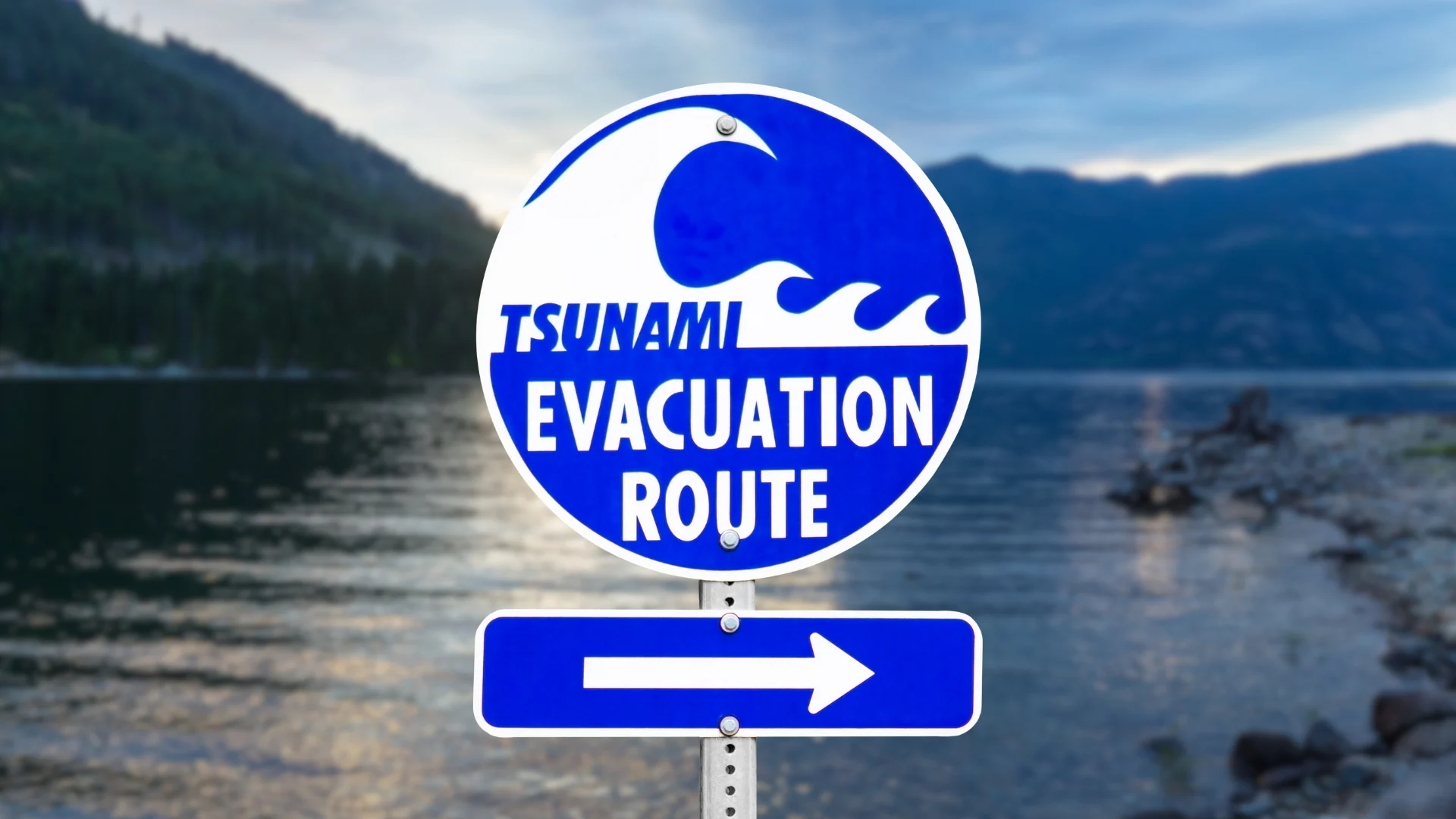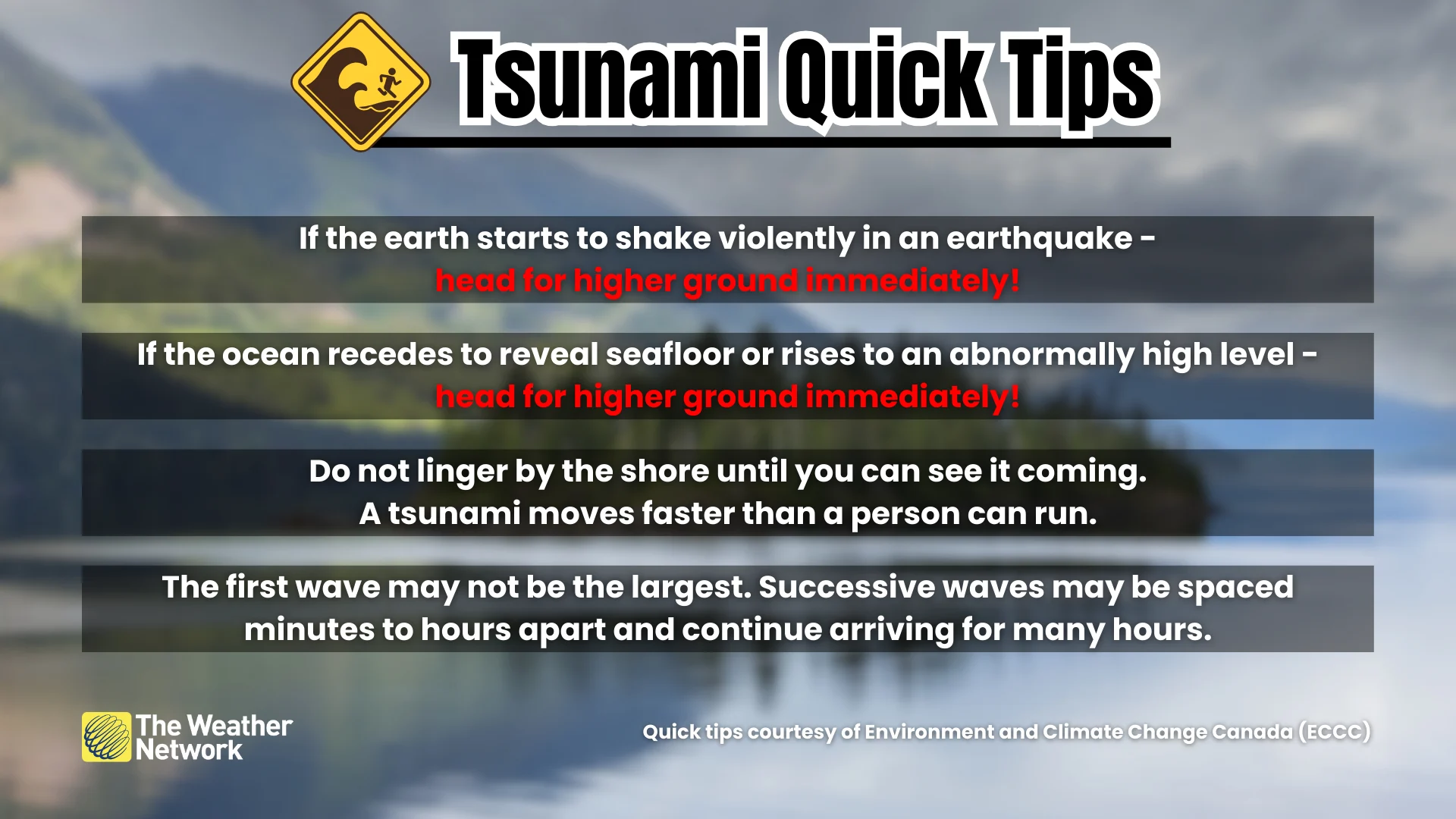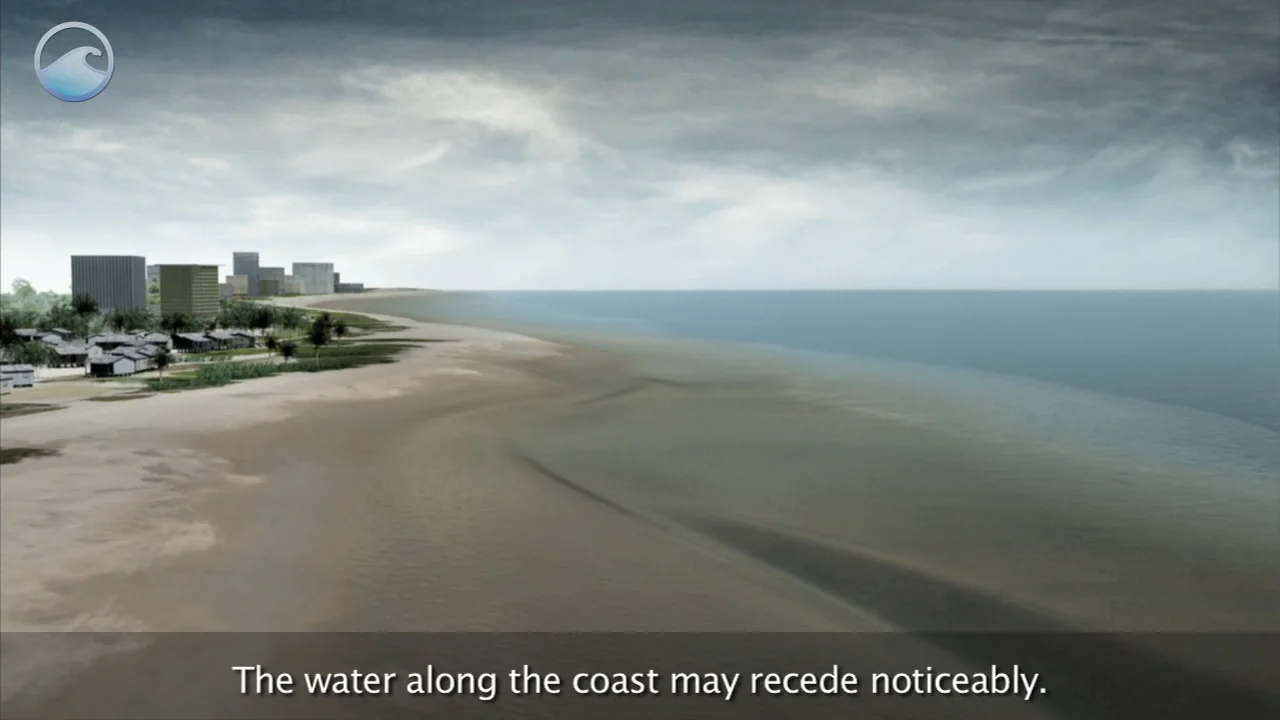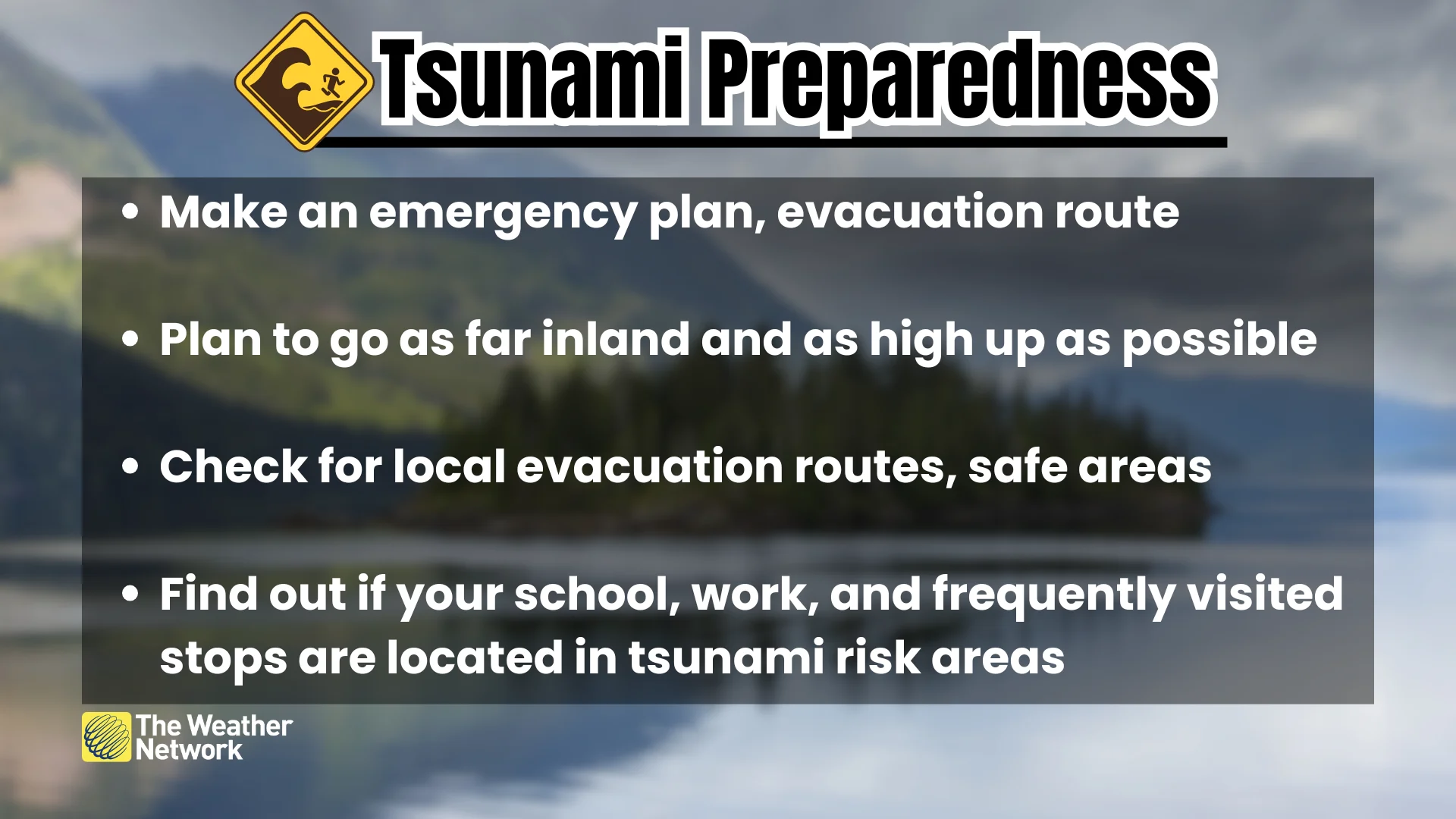
Tsunami safety tips: What to do if these dangerous waves threaten
Preparation is the best defense against any natural disaster. Heed these tips if a tsunami threatens your community
Tsunamis are a destructive and deadly hazard for coastal communities across Canada and around the world.
A tsunami is a series of large, persistent waves caused by the sudden displacement of a body of water. Earthquakes are responsible for more than 80 per cent of tsunamis that form around the world, according to NOAA, but these waves can also occur after events like landslides and volcanic eruptions.
RELATED: What is a tsunami? How these powerful waves spell coastal danger

Tsunami waves can travel across deep-ocean waters as fast as 800 km/h, propelling them thousands of kilometres away from the epicentre of an earthquake. Many tsunamis consist of multiple waves that can arrive minutes or hours apart. The first wave might not be the largest.
Natural Resources Canada reported in 2010 that, on average, at least one tsunami has affected Canada every 15 to 20 years since the beginning of the 20th century.
Follow these tips to stay safe before, during, and after a tsunami threat in your community.
Listen for alerts
Officials begin assessing the threat for a tsunami within moments of an earthquake’s detection. Environment and Climate Change Canada (ECCC) may issue several types of alerts if a tsunami is possible along Canadian coastlines.

A tsunami warning means you are in imminent danger—widespread flooding from a tsunami is expected or occurring. Communities under a tsunami warning could see significant inundation as the waves arrive.
A tsunami advisory is issued when a tsunami could produce large waves or strong currents that pose a threat to people in or close to the water.
A tsunami watch means you should stay alert for further information. Tsunami watches are issued when a distant event is detected that could trigger a tsunami. Experts are assessing the risk and will issue advisories or warnings if warranted.
Know the warning signs
Some tsunamis can strike before an alert is issued—especially waves caused by landslides or volcanic eruptions. Knowing the warning signs of a tsunami is a critical survival skill along the coastline.
If you’re along the coast and feel a strong earthquake or witness a nearby landslide, move inland to higher ground immediately.

A depiction of ocean water receding to expose the seafloor before the arrival of a tsunami. (NOAA)
The ocean often recedes before a tsunami arrives. If you observe the water pulling back to reveal the seafloor, or if the water unexpectedly begins to rise, move inland to higher ground as quickly as possible.
Do not venture onto the exposed seafloor, and do not stay to watch the tsunami. These waves move faster than any person can run.
Plan and practice for evacuations
Preparation is the best defense against any natural disaster.
ECCC recommends preparing an emergency plan for everyone in your household so you know exactly what to do if a tsunami threatens your community.
Form an evacuation plan so everyone in your household knows exactly what to do and where to go in the event a tsunami warning is issued. You should be able to get to your evacuation spot within several minutes. Practice your evacuation plan regularly so you can carry it out with ease if a threat ever arises.

Look into whether your routine stops—including school, work, and shopping centres—are located within tsunami hazard zones. Study where to go if a tsunami warning is issued while you're at these locations.
Scout out where you would shelter in place if an evacuation to higher ground isn’t possible. Plan to escape to the highest floor of the building, away from windows and on the side of the building facing away from the water.
Ensure you have a way to stay up-to-date with the latest alerts, announcements, and news updates. Keep battery packs on hand to recharge electronic devices. A battery-powered radio is a critical tool to receive realtime updates in the event of an emergency.
After a tsunami
The risk to health and safety doesn’t end after a tsunami.
Significant, widespread flooding is likely in the wake of a tsunami. These dangerous and debris-filled floodwaters may linger long after the tsunami waves stop.
Do not return to the coast until given the ‘all clear’ from local authorities that it’s safe to do so.
Remain alert for additional hazards, including earthquake aftershocks, landslides, and the risk for additional flooding.
